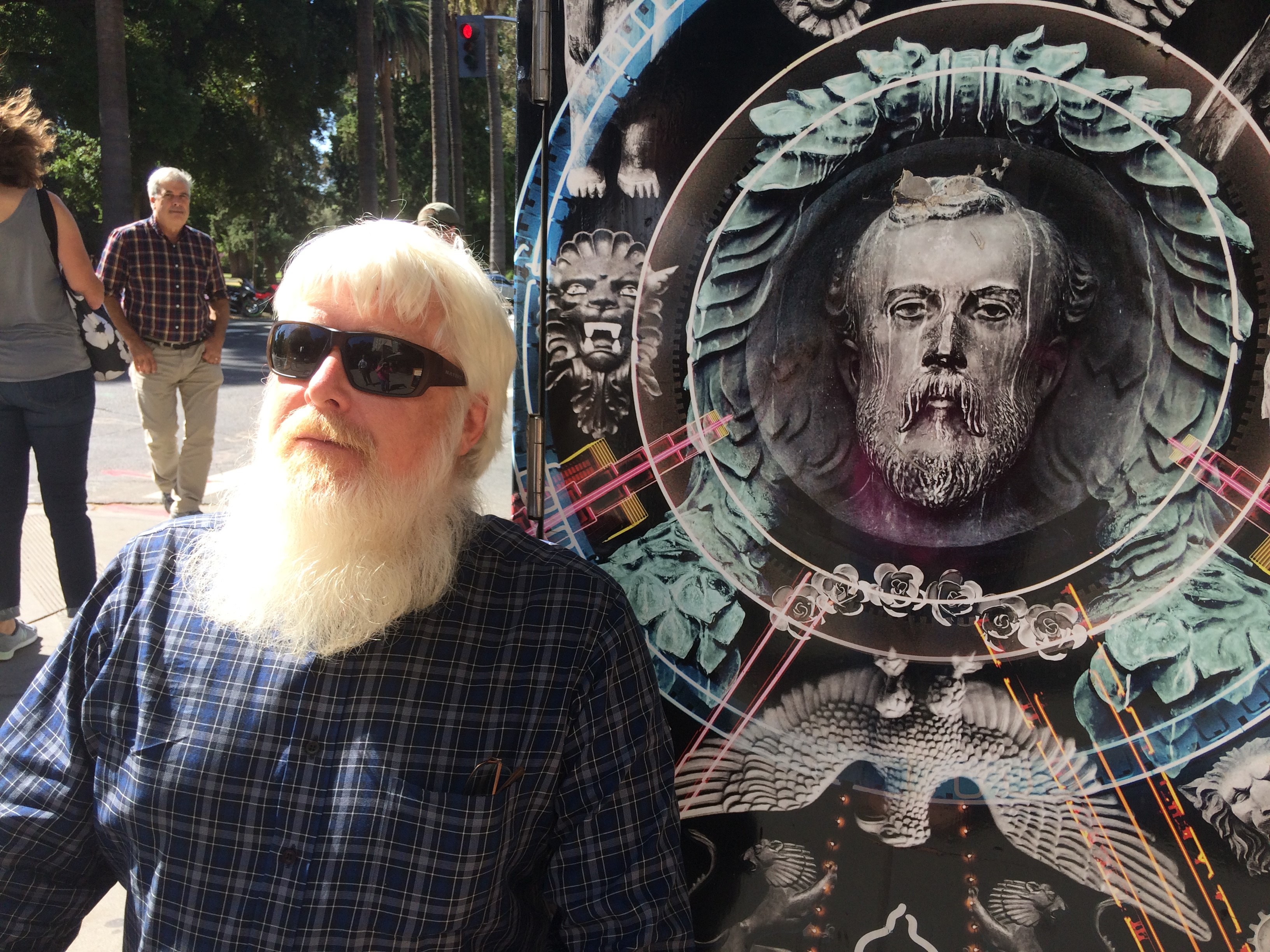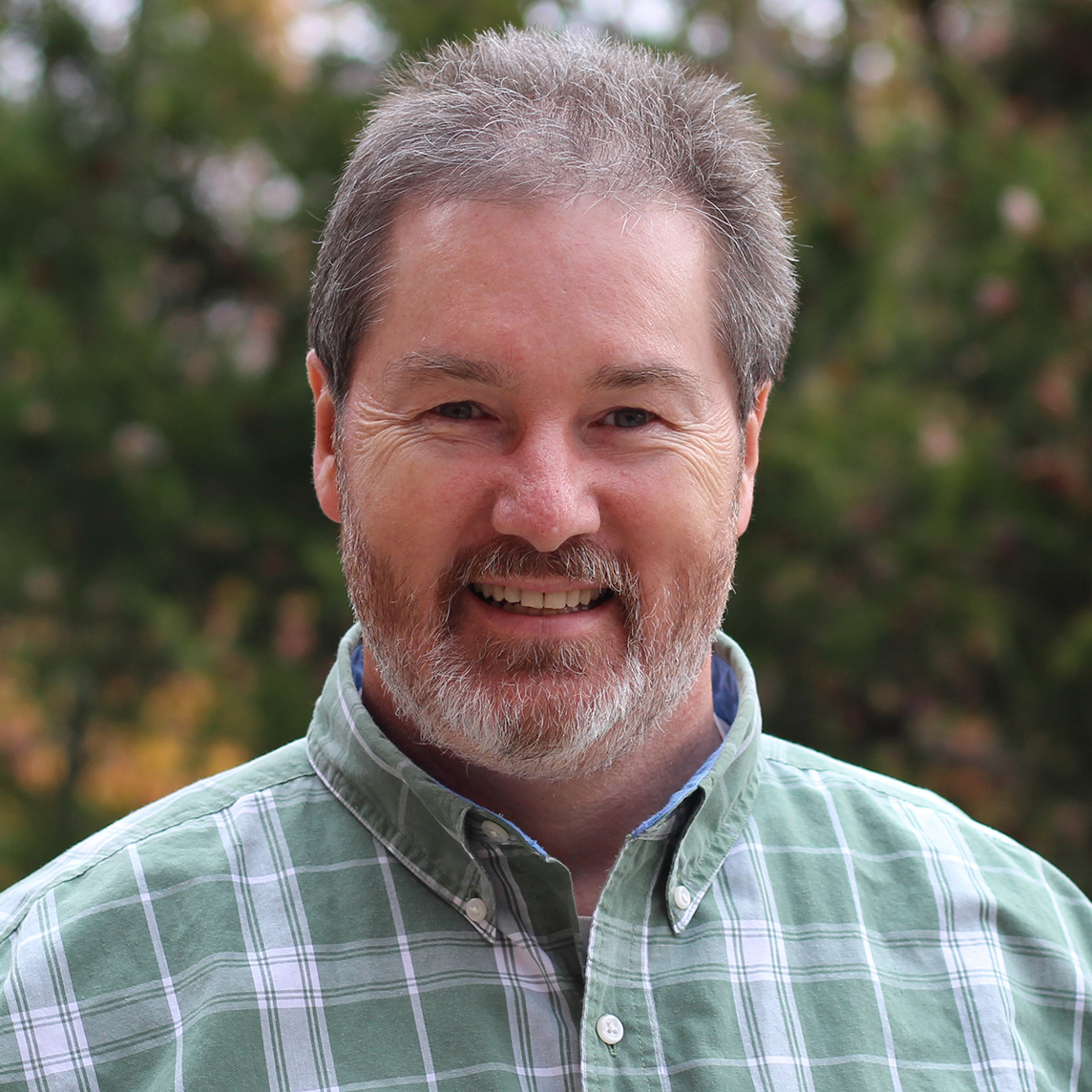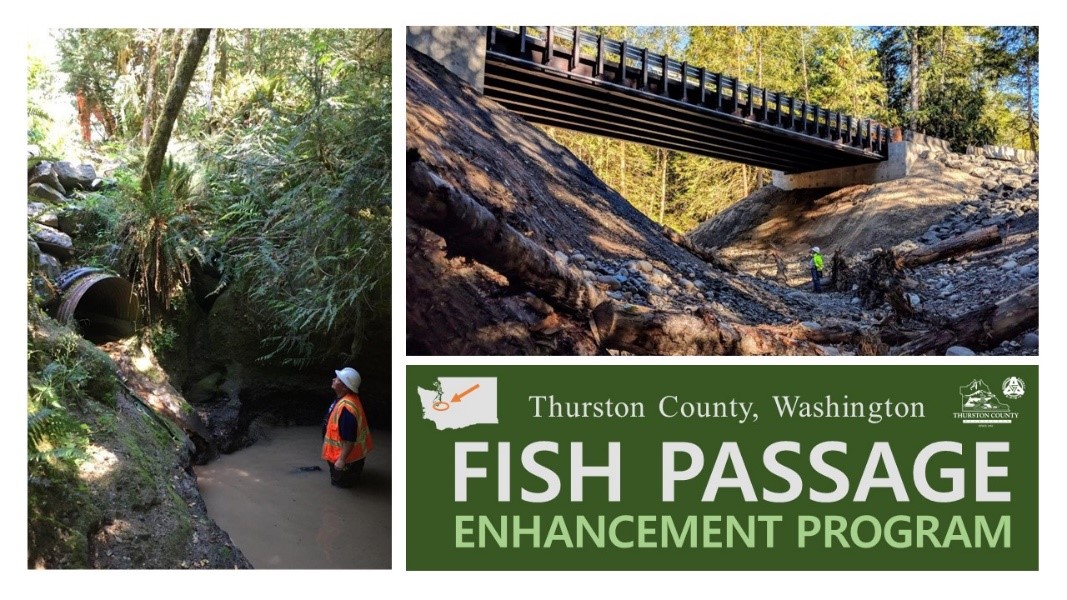Legacy Award 1
Paul Wagner, Washington Department of Transportation

Paul Wagner is a pioneering road ecologist with the Washington State Department of Transportation. His career spans over three decades and he has helped foster WSDOT become a leader in environmentally sustainable transportation. Paul has been a tireless advocate of environmentally sensitive and responsible highway development. In Washington State, his influence for protecting wildlife habitats and wildlife habitat connectivity has ranged from fish to large ungulates and carnivores. Paul's involvement in ICOET has broadened his range of influence in Washington State, across the United States and around the world.
Paul has been closely associated with ICOET since the conference's inception. Paul has been a regular contributor to ICOET with numerous papers. He has been a member of all ICOET committees. Paul was the ICOET 2011 Conference Chair. The results of Paul's efforts in organizing ICOET 2011 in Seattle were resounding. ICOET 2011 was an extremely successful conference and had a record attendance for its time. Paul represented ICOET at the Infra Eco Network Europe (IENE) 2010 conference in Hungary. He was well received by the IENE board of directors. Paul Wagner has been involved in all aspects of road ecology for at least three decades. He is the Biology Branch Manager for Environmental Services Office of the Washington State Department of Transportation (WSDOT). In Washington State, he is member of the Brian Abbot Fish Barrier Removal Board. In 2006, Paul was a Steering Team member of the Eco-logical: An Ecosystem Approach to Developing Infrastructure Projects. In 2004, Paul told the Washington State Transportation Commission that "The idea of road ecology is getting more attention nationally and internationally,". He was instrumental in the wildlife protection and wildlife habitat connectivity initiatives taken with the I-90 Snoqualmie Pass project and a reviewer of the I-90 Snoqualmie Pass Wildlife Habitat Linkage Assessment.
Websites or Media Coverage
Links: Programmatic Endangered Species Act onsultations https://tpf.transportation.org/wp-content/uploads/sites/35/2018/09/Programmatic-Endangered-Species-Act-Consultations-Washington-State.pdfBrian
Abbot Fish Barrier Removal Board
https://wdfw.wa.gov/sites/default/files/about/advisory/fbrb/FBB%20Roster%2007.15.19.pdfEco-logical:
An Ecosystem Approach to Developing Infrastructure Projects
https://www.environment.fhwa.dot.gov/env_initiatives/eco-logical/Report/ecological.pdf
Washington State Transportation Commission https://www.sunnysidesun.com/archive/dot-working-to-protect-roadside-habitats/article_6b291194-47da-536f-a6b5-2998aa65749f.html
LEGACY AWARD 2
TRICIA WHITE, Defenders of Wildlife, National Wildlife Federation, Creator of TransWild Alliance

Trisha was the NGO representative to ICOET from Defenders of Wildlife until her position was unexpectedly cut from DOW. Trisha has recently been asked to help represent habitat connectivity in the drafting of the upcoming Federal Transportation Bill. Her contributions to ICOET were never fully recognized, after DOW cut her program. She was instrumental in bringing together diverse groups to consider habitat connectivity. One of her many strength is that ability to debate with an open mind. Her legacy in VT is that she participated in the FHWA European Scan Tour of wildlife crossings and fiercely debated the merits of wildlife crossings with our then Chief Engineer. By the end of the scan tour Trisha and Dave Scott were friends and Dave understood the value of a DOT for considering safe wildlife movement. Trisha's efforts with ICOET and beyond, helped get road ecology on the proverbial map of mainstream legitimacy. She was instrumental in bringing wildlife crossings and habitat connectivity out of the fringe and into the mainstream lexicon of transportation engineers.
Websites or Media Coverage
Second Nature improving transportation without putting nature second: https://escholarship.org/uc/item/45b3r257
https://trid.trb.org/view/731601
Twenty Years of Wildlife and Highways: https://prezi.com/p/d5znzazyerd_/20-years-of-wildlife-and-highways/
LEGACY AWARD 3
EUGENE MURRAY, North Carolina State University

Eugene was the primary organizer for ICOET from 2008 through 2017. He is one of the longest-running contributors to the field of transportation ecology and ICOET. Eugene provided constant and considerate care for its attendees and committee members. His various roles included administrative support for the ICOET Steering and Program committees; attendee/exhibitor registration and support; managing the budgets, logistics, contracts and coordination with venues and vendors; design and production of event materials; and documenting the conference proceedings. Eugene’s dedication and service to the hundreds of industry professionals who attended ICOET each year contributed significantly to the conference’s past growth and ongoing success. Since 2017 he has continued to support ICOET as a Steering Committee member and a resource for the current conference organizer.
What most don't realize is the intensity and type of work he was contributing to ICOET over the last 15 years. Although Eugene was paid through NCSU to help keep ICOET going, he did so with such aplomb and thoroughness that it is obvious that he deeply cared about the product of his work. From taking care of every conference participant's needs (how many of reached out to and quickly got a reply), to taking photos of us as we presented, asked questions, laughed, and enjoyed field trips, to encouraging and moving committee work along in a timely fashion, he dedicated energy beyond what anyone could reasonably expect from someone in his official position. This has benefited all of us, the field in general, and by extension the natural systems we are all working to protect. And not just in the US, but internationally, by trying to support participation by international scientists and then showing that they were valued by displaying their national flag. By being on the spot leading up to and during the conference and never (detectably) dropping the ball, he has contributed more than all of us to keeping ICOET going. Even for those of us who dwell solely on academic and policy practice and achievements, he has quietly kept the field and meetings moving forward in ways that have become invaluable for our collective progress. I can think of no-one more deserving of the legacy award than Eugene.
Websites or Media Coverage
His online resume: https://itre.ncsu.edu/wp-content/uploads/2016/03/MurrayE.pdf
STEWARDSHIP AWARD 1
Thurston County Fish Passage Enhancement Program

Thurston County, home to hundreds of salmon bearing streams, has successfully implemented a comprehensive program to replace fish blocking culverts in the county. In 2016, the Board of County Commissioners directed Public Works to accelerate fish barrier removal by developing the Fish Passage Enhancement Program with the goal of prioritizing and completing construction of fish passable structures within two years. A total of $4.5 million was budgeted from the county’s Real Estate Excise Tax (REET) to pay for the initial start of the program and the first project cycle (2017-2018). County culverts were inventoried, cataloged and scored based upon anadromous fish access and potential habitat, barrier status, culvert condition and maintenance history, resulting in a database of fish blocking culverts. Priority culverts were identified, field verified, and recommended for construction based upon the highest collective return of fish habitat and constructability within the two-year budget cycle. Of the more than 3,000 culverts in use on Thurston County roadways, engineers and environmental specialists identified 150 potential fish blocking culverts and successfully completed five projects under the Fish Passage Enhancement Program in 2018. Program leads at Thurston County worked with three design engineering firms and three construction firms to complete fish passage projects at the five sites. Enhancements include removal of eight fish-blocking culverts, installation of three prefabricated bridges and two large fish-passable culverts, opening access to 7.5 miles of upstream habitat. Riparian areas and streambeds were also enhanced at each project site. A side benefit is safe passage and improved habitat for many other animals, including deer, small mammals such as raccoons and mink, and priority species such as Oregon spotted frogs and Olympic mud minnows. Stabilizing the stream crossings also reduces erosion, improves downstream water quality and helps reduce flooding and maintenance issues. Results of the program have been swift, with the first fish in nearly 100 years passing upstream underneath Hunter Point Road a few days after construction was completed. The program has been funded for another two years and is well on the way to replacing another five barriers in the 2019-20 cycle, opening 6.5 miles of habitat. Other jurisdictions are very interested in setting up similar programs and Public Works staff have presented to numerous professional and civic groups to help others achieve the same success. Availability of dedicated funds from the Real Estate Excise Tax, use of prefabricated structures and streamlined permitting expedited the process. REET funds allocated to the program have been leveraged to secure roughly $2.4 million in grants which will be used on current projects and to replace an additional four barrier culverts in 2021. Collaborators include the Nisqually and Squaxin Island Tribes, Confederated Tribes of the Chehalis, the state Fish Barrier Removal Board, the Salmon Recovery Funding Board, four Water Resource Inventory Area Citizen Committees (WRIA 11, 13, 14, 22/23) and the South Puget Sound Salmon Enhancement Group. The program was awarded APWA (American Public Works Association) Washington State as well as National Environmental 2019 Project of the Year in the <$5 million category. https://www.co.thurston.wa.us/publicworks/FishPassageEnhancements.html
Thurston County, home to hundreds of salmon bearing streams, has successfully implemented a comprehensive program to replace fish blocking culverts in the county. In 2016, The Board of County Commissioners directed Public Works to accelerate fish barrier removal by developing the Fish Passage Enhancement Program with the goal of prioritizing and completing construction of fish passable structures within two years. A total of $4.5 million was budgeted from the county’s Real Estate Excise Tax (REET) to pay for the initial start of the program and the first project cycle (2017-2018). County culverts were inventoried, cataloged and scored based upon anadromous fish access and potential habitat, barrier status, culvert condition and maintenance history, resulting in a database of fish blocking culverts. Priority culverts were identified, field verified, and recommended for construction based upon the highest collective return of fish habitat and constructability within the two-year budget cycle. Of the more than 3,000 culverts in use on Thurston County roadways, engineers and environmental specialists identified 150 potential fish blocking culverts and successfully completed five projects under the Fish Passage Enhancement Program in 2018. Program leads at Thurston County worked with three design engineering firms and three construction firms to complete fish passage projects at the five sites. Enhancements include removal of eight fish-blocking culverts, installation of three prefabricated bridges and two large fish-passable culverts, opening access to 7.5 miles of upstream habitat. Riparian areas and streambeds were also enhanced at each project site. A side benefit is safe passage and improved habitat for many other animals, including deer, small mammals such as raccoons and mink, and priority species such as Oregon spotted frogs and Olympic mud minnows. Stabilizing the stream crossings also reduces erosion, improves downstream water quality and helps reduce flooding and maintenance issues. Results of the program have been swift, with the first fish in nearly 100 years passing upstream underneath Hunter Point Road a few days after construction was completed. The program has been funded for another two years and is well on the way to replacing another five barriers in the 2019-20 cycle, opening 6.5 miles of habitat. Other jurisdictions are very interested in setting up similar programs and Public Works staff have presented to numerous professional and civic groups to help others achieve the same success. Availability of dedicated funds from the Real Estate Excise Tax, use of prefabricated structures and streamlined permitting expedited the process. REET funds allocated to the program have been leveraged to secure roughly $2.4 million in grants which will be used on current projects and to replace an additional four barrier culverts in 2021. Collaborators include the Nisqually and Squaxin Island Tribes, Confederated Tribes of the Chehalis, the state Fish Barrier Removal Board, the Salmon Recovery Funding Board, four Water Resource Inventory Area Citizen Committees (WRIA 11, 13, 14, 22/23) and the South Puget Sound Salmon Enhancement Group. The program was awarded APWA (American Public Works Association) Washington State as well as National Environmental 2019 Project of the Year in the <$5 million category.
Websites or Media Coverage
https://www.co.thurston.wa.us/publicworks/FishPassageEnhancements.html
STEWARDSHIP AWARD 2
The Endangered Wildlife Trust

The EWT has been at the forefront in encouraging cooperative efforts to minimise wildlife conflicts, an issue historically neglected by TLI institutions in South Africa. Since 2011, advocacy work for roads has been undertaken through partnering with toll concession companies, academia, creating citizen science projects and outreach programmes to school children, whilst a 23-year partnership with Eskom, the country’s national power utility, has reduced the impact of wildlife-energy infrastructure interactions nationally to the benefit of the environment, power utility and end-users. This partnership is estimated to save Eskom some US$18,444,000 annually; some of our mitigation measures reduce wildlife deaths by over 90%; and benefits to end-users are untold. In 2014, EWT expanded the scope of their strategic partnership with Eskom into renewable energy, through assisting Eskom with environmental compliance and monitoring on the Sere windfarm. A further working relationship was established, whereby all roadkill, bird strikes and other incidents at their power generation sites were recorded. An additional tool, and as a first for the country and continent, we authored a handbook in 2016 to provide national guidelines for mitigation methods to address wildlife road conflict in South Africa and are working with industry to implement these. Our results are not limited to ‘quick-fix temporary solutions’ but demonstrate sustainable products. One of the EWT’s mitigation success stories has demonstrated that bird mitigation on electrical infrastructure reduces mortality by ~90%. The devices are long-lived and have a lifespan of between 9 and 25 years, depending on the specific product. Our Roads in Parks Project assessed the comparative effectiveness of wildlife-warning signage for altering driver behaviour in protected areas, with the outcomes expected to contribute towards developing a management plan for addressing visitor behaviour in protected areas as well as guiding future wildlife-warning signage on regional and national roads. In 2017, the EWT successfully facilitated the formalization of a partnership between a local NGO and power utility in Australia. This serves as the first working example of the ecological-stewardship-partnership model being transferred to a different country with relative ease. We are now working with USAID and PowerAfrica to replicate this model in East Africa. In 2019, the first international conference to combine the framework of transportation and energy at one forum outlining multiple, common threats to the environment was co-hosted by the EWT and Eskom. The African Conference for Linear Infrastructure and Ecology (ACLIE), introduced a less siloed approach that combined all forms of transportation and energy, since these modes usually co-exist and have multiple negative impacts on biodiversity. This framework has since set the precedent for other global conferences. In 2013 we launched several national campaigns to allow members of the public to get involved in a citizen science programmes and submit their roadkill sightings. This began with the launch of a cellphone app, “RoadWatch”, one of the first roadkill apps. in the world. The app was followed by the development of social media sites that are used to educate and engage members of the public, in TLI and ecology and has an international following of nearly 1,500 members. To date, as a result of our stewardship actions, the EWT’s Roadkill Data Citizen Science Project has established the first national database for animal road mortalities, resulting in two international publications. Furthermore, the identification of species and habitats at risk of roads are being used to guide new research projects.
Websites or Media Coverage
